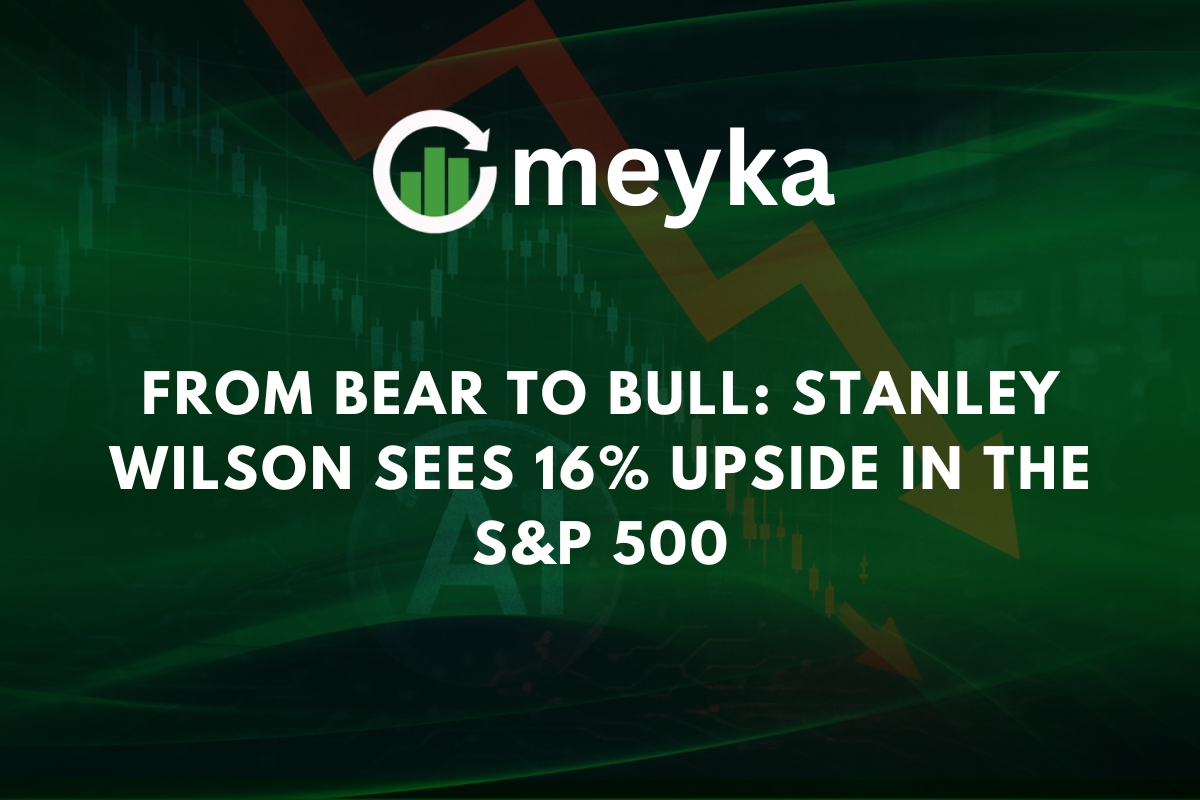From Bear to Bull: Stanley Wilson Sees 16% Upside in the S&P 500
The spotlight is now on Stanley Wilson, the chief U.S. equity strategist at Morgan Stanley, who is projecting a major rebound in the U.S. stock market. In his latest note, Wilson forecasts the S&P 500 could rise about 16 % over the next 12 months, suggesting a clear shift from the previous bear-market fears into a new bullish phase.
In simple terms: after a period of weakness and uncertainty, Wilson believes we are now in the early innings of a new bull market, backed by earnings growth, artificial-intelligence (AI) advances, and supportive policy. The aim of this article is to break down his call, why it matters, what could go wrong, and how investors might respond.
What Is Stanley Wilson Saying?
The forecast
Wilson and his team at Morgan Stanley raised their 12-month target for the S&P 500 to 7,800 points, up from an earlier figure of 7,200. That implies about a 16 % gain from current levels.
The context of the call
He argues we moved from a “rolling recession” into a “rolling recovery” and that a new bull market began in April.
“A major bear market ended in April, and a new bull market began,” Wilson states in a Morgan Stanley commentary.
What is driving his optimism?
Wilson points to several key drivers:
- Strong corporate earnings growth and improved earnings-revision breadth.
- The rise of productivity gains from AI and technology adoption.
- A business-friendly policy backdrop, including tax benefits and regulatory tailwinds.
- Valuation support: While valuations are elevated, they may be justified given the earnings momentum.
Why Does This Matter for Investors?
From cautious to bullish
For months many investors feared recession, rising inflation, and market corrections. Wilson’s shift to a bullish stance signals confidence that the worst may be behind us.
Why is that shift happening now?
Because the data, especially earnings and revisions breadth, is improving, and because inflation fears may be moderating, allowing for a more favourable equity environment.
What it means for portfolios
If the S&P 500 can rise 16 %, investors may consider increasing exposure to equities, especially those sectors poised to benefit from the next cycle: industrials, consumer discretionary, financials and firms leveraging AI. Wilson suggests that this is not just about mega-cap tech but a broader market move.
Still, he warns that any pullback could be a buying opportunity.
What Could Go Wrong? Risks to Stanley Wilson’s Call
Execution risk
Even with strong drivers, execution matters. If companies fail to deliver earnings growth or if AI investments don’t yield the expected return, the 16 % upside may not materialise.
Policy and inflation risk
Wilson’s outlook assumes favourable conditions, including possible rate cuts or at least stable interest rates. If inflation surprises to the upside or monetary policy tightens, the rally could stall.
Could the Fed upset the rally?
Yes. If the Federal Reserve signals tighter policy rather than easing, equities could face headwinds.
Valuation and external shocks
Valuations are high, and external shocks, such as geopolitical risk, trade disputes or emerging-market stress, can derail even the most bullish outlooks.
How to Interpret Stanley Wilson’s Bull Market Narrative
A new cycle, earlier stage
Wilson believes the market is shifting phases, from bear to bull. He notes that when a new bull market begins, gains can be explosive and broad-based.
Why does this change matter?
Because it means that investor strategy should evolve: from defence to offense, from narrow leadership (just tech) to broad participation (cyclicals, industrials, financials).
Change in leadership and breadth
Wilson highlights that breadth is improving, more sectors are participating. That is a hallmark of a sustainable up-cycle rather than a narrow rally.
The role of AI and productivity
He emphasises that AI and productivity advances are not just themes but structural changes that justify the optimism. That means the upside isn’t just about multiple expansion; it’s about earnings growth.
What Should Investors Do Now?
Stay alert and participate
Given Wilson’s forecast, investors might consider increasing exposure to equities while maintaining awareness of risk.
Is now the time to buy?
Possibly, but with caveats. Timing matters. Wilson himself suggests buying dips rather than chasing expensive highs.
Diversify across sectors
Don’t just focus on tech. Given the shift in market leadership, sectors such as industrials, financials, consumer discretionary and mid-caps may offer value.
Keep risk management front and centre
Even a bullish outlook can be derailed by an unexpected shock. Use stop-losses, consider hedges, and avoid overconcentration.
Monitor key flashpoints
- Earnings revisions and guidance → if this falters, the rally may weaken.
- Fed policy and inflation data → unexpected hawkishness may dampen the move.
- External developments → trade wars, geopolitical shocks, and major economic surprises.
Conclusion
Stanley Wilson of Morgan Stanley is making a bold call: the S&P 500 has potential upside of around 16 %, driven by a transition from bear to bull, strong earnings, AI innovation and favourable policy settings. The narrative is simple yet powerful: we have moved from a period of defensive thinking into a phase of growth and opportunity.
That said, the road ahead is not guaranteed to be smooth. Risks remain, execution is key, and investors must remain disciplined. But if Wilson’s thesis holds, we are in the early phase of a broad-based market move. For savvy investors this may mean shifting mindset, staying diversified across sectors, and being ready to act when dips arise.
In short: buckle up, stay vigilant, and keep an eye on the signals, because this may be the start of something bigger.
Disclaimer
The content shared by Meyka AI PTY LTD is solely for research and informational purposes. Meyka is not a financial advisory service, and the information provided should not be considered investment or trading advice.






